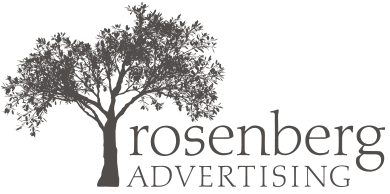Your website plays a crucial role in the success of your business. Once people are there, you want to keep them there to learn more about how you can help them or drive them to take action. Here’s what should be on every website, small or large, in order to accomplish this goal.
Strong and clear brand identity
Your site should have a consistent look and feel throughout, sticking with only a few different colors and fonts that represent your company’s image well. Your logo should be clear and visible in the website header on every page (and should link to the homepage so users can easily navigate to it from anywhere on the site).
In addition to how your branding comes across visually, consider how you describe your company. We recommend every business have a “positioning statement” on their homepage. Think of it kind of like an elevator pitch – if you had just one sentence to tell someone what your business does at the highest level, what would it be?
For example, if you navigate to our homepage, you’ll see ours: “We’re a Dedicated Team of Marketing Maniacs Waiting to Tell Your Story.”
Navigation
Every site should have clear navigation that corresponds to a well-thought-out site structure. All important pages on your site should be accessible to the user within 1-3 clicks – the fewer, the better. At minimum, this means a header navigation, but it’s a good idea to use a footer navigation in addition for lesser-used pages, and in some cases a secondary header navigation may also be appropriate. Finally, don’t forget to specifically design and test your mobile navigation.
Mobile responsiveness
Speaking of mobile, your site should be easy to use on any device, with appropriate font sizes and padding so that everything automatically scales and is easy to read on mobile. Adequate spacing around links in menus also makes it easier for users to tap with their fingers on mobile.
Clear CTAs
What do you want the user to do after reading a page on your site? Maybe you want them to make a purchase, navigate to another page to learn more, or simply contact you. Don’t make them work to figure it out. Tell them! Give clear CTAs and links to where you want them to go next on every page, not just the main pages. You never know what page they will enter the site on.
Plenty of white space and padding
Sometimes companies try to put too much information “above the fold,” leading to a lot of crammed content. Trust us, by now everyone knows to scroll down a website to see more information – you don’t need to fit everything important “above the fold!” Having too much content in one area makes the user not want to read it at all – it’s better to break it up with white space, subheadings, icons, and images, which makes the page longer, but much easier to digest.
No unnecessary copy
Along those same lines, any copy on your website should:
a) tell the reader critical information about your organization,
b) inform the reader about what you can do for them/how you can solve their problem,
c) educate the reader about topics that are relevant to your organization in some way (this would be considered top-of-the-funnel content), and/or
d) express your brand’s personality in a way that will engage your ideal customer.
If it doesn’t accomplish one or (even better) more of these things, it is not needed. Get rid of it!
Clear, original photography
If possible, have a photo shoot for your website. Make a day of it. Hire a professional photographer and take candid photos of your employees doing their jobs, interacting in meetings, even having lunch together. Using original photography on your website is a great way to let your personality shine.
Proper Analytics tracking codes
As of recently, all websites should have a GA4 code installed in addition to Universal Analytics. For most sites, the best way to implement multiple tracking codes is through Google Tag Manager. Make sure to fully configure your Analytics account with goal tracking, ecommerce tracking (if applicable), site search tracking (if applicable), etc. so that you can get the full picture of what your users are doing on your site–and what you can improve.




